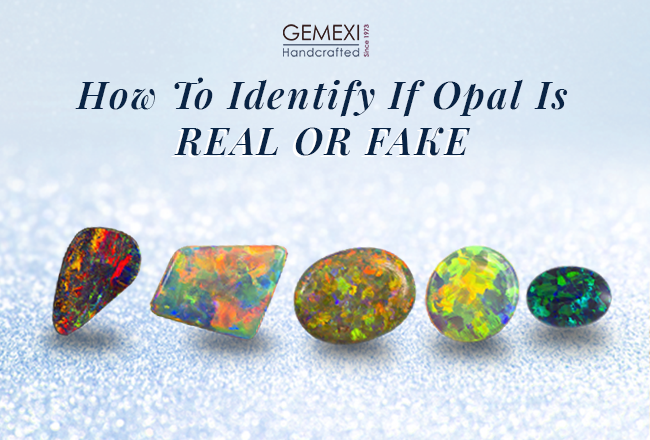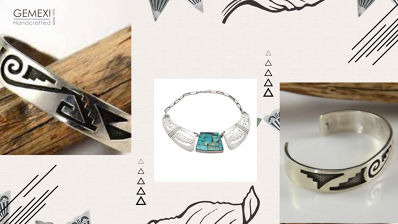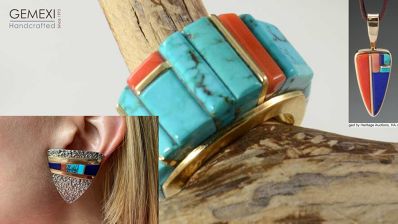How to Tell If an Opal is Real or Fake?
By Gemexi Team | Jewelry Education- Updated On Mar 15, 2023

Precious stones have a lot of wonderful facets to them. But the most exemplary feat about these stunners is the fact that they are not any regular piece of jewelry. Over other ornaments, gemstones are so coveted because they are surreally beautiful and incredibly mighty - an absolute win-win! And the one true, most popular flagbearer of these features is Opal! The national gemstone of Australia, opals are believed to bring good fortune and joy into one’s life. But well, that’s only possible if the opal is genuine and natural, which is a rarity.
So, how to tell if an opal is real? How to identify if an opal is created in a lab or not? Let’s find out the tips and tricks here. In fact, we’ll also let you know about what are the different healing powers of opal which might help you bring good fortune and joy into your life.
How to tell real vs fake opal?
For jewelers who are well aware of what opals look like, identifying a raw one isn’t a task. But for people otherwise, this isn’t easy. However, here are a few tips on how to tell a real opal :-
Take an overall look -
-
Check the sides -
-
Check the top -
-
Check the back -
How to identify a lab created Opal?
The debate between real opal vs lab created has always been a hot topic of the gemstone world. So, let’s dive in and see how to spot a synthetic opal. Here are the top 3 warning signs to look out for :- A lab-created or fake opal does not radiate brightly under UV light!
- Unlike real opal, the opal created in the lab let out peculiar, arranged color flashes.
- These opals are oddly absorbent when compared to natural opals.
What about treated opals?
Treated opals are opals that have been enhanced or altered in some way to improve their appearance or durability. There are several common treatments for opals, including:- Dyeing - Some opals may be treated with dyes or pigments to enhance or change their color. This can make the stone appear more vibrant or intense, but it can also reduce the stone's value.
- Impregnation - Opals can be treated with a resin or other material to increase their durability and resistance to scratches or damage.
- Stabilization - Opals that are prone to cracking or breaking can be stabilized with a resin or other material to strengthen the stone and prevent further damage.
- Matrix removal - Some opals have a natural matrix or host rock that surrounds the gemstone. This matrix can be removed or reduced to improve the appearance of the opal.
What are the healing powers of Opal?
With opal, there is never enough beauty. Every time you move the stone lightly, it reflects a different hue - hence the Greek name “Opallios” meaning “to see a change in color”. And the cherry on the cake? This gemstone is not just limited to being a feast for the eyes. It comes in handy with loads of incredible healing powers, like :

-
Physical healing -
-
Emotional healing -
-
Healing the chakras -
How to use a genuine Opal?
To enjoy the many benefits of opal gemstone jewelry, it is recommended to wear it as jewelry. You can either get it made into a dainty pendant or a simple ring.Opals are arguably one of the best gemstones, given how tremendously powerful and affordable they are. But there’s always a question that comes along with this gemstone - is it real or fake? So we decided to do away with it - once and for all. Also, you can find a few amazing ways of Ethiopian opal Is real or fake.
- Tags:
- How To Identify Real Opal
- Real Opal Vs. Lab Created
- Synthetic Opal
- Healing Powers Of Opal
- Natural Opal
- Opal Stone Is Real Or Fake
- How To Tell If Opals Are Real
- Real Vs Fake Opal
- Opal Stone Real
- How To Tell If Opals Are Real










2 Comments
Write CommentsFirst time I have gotten excellent knowledge about the difference between fake and real opal. It helped me a lot when I bought an opal ring.
Nice blog! It contains a genuine knowledge of gemstones. I will always consider all these facts when I wear gemstones.